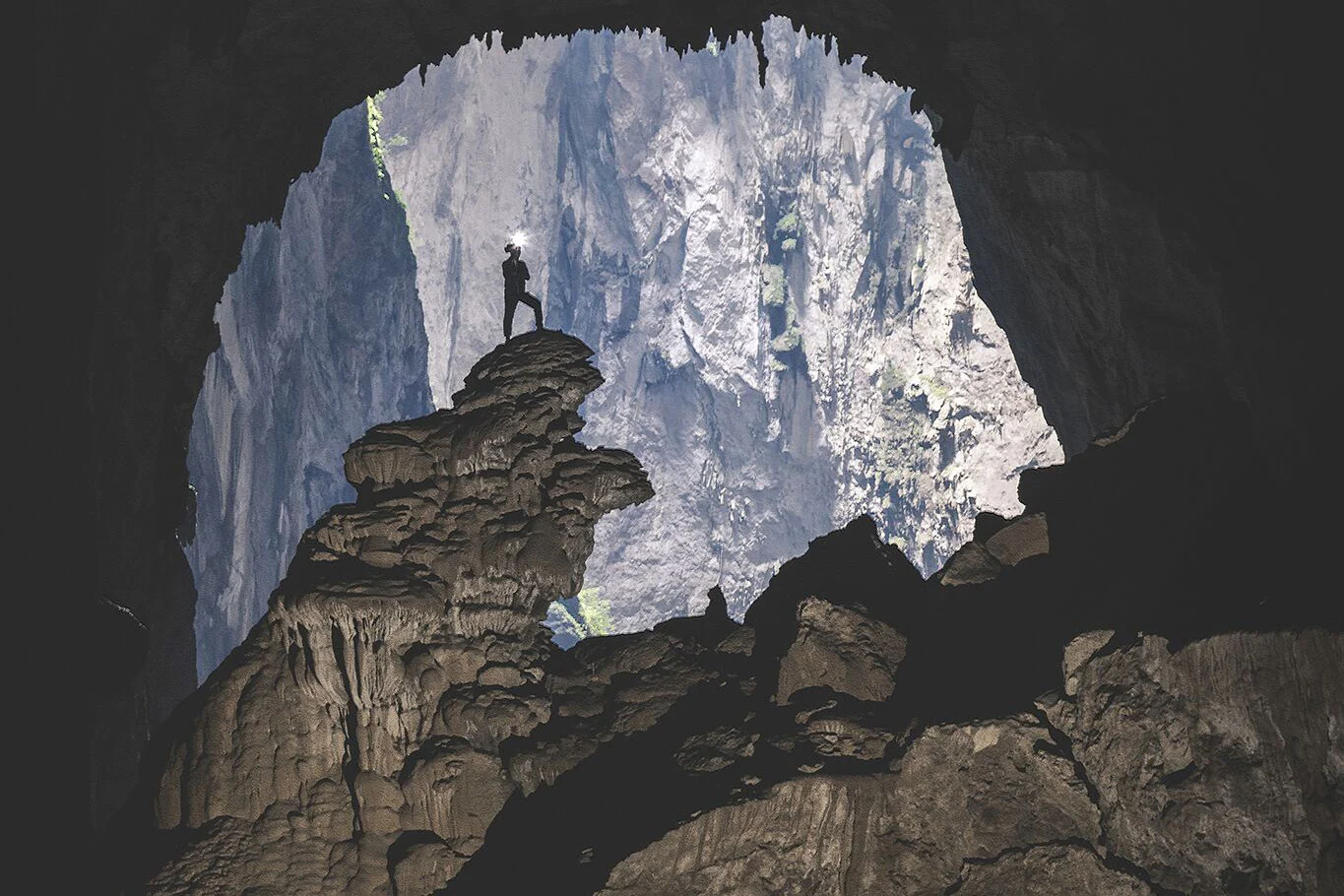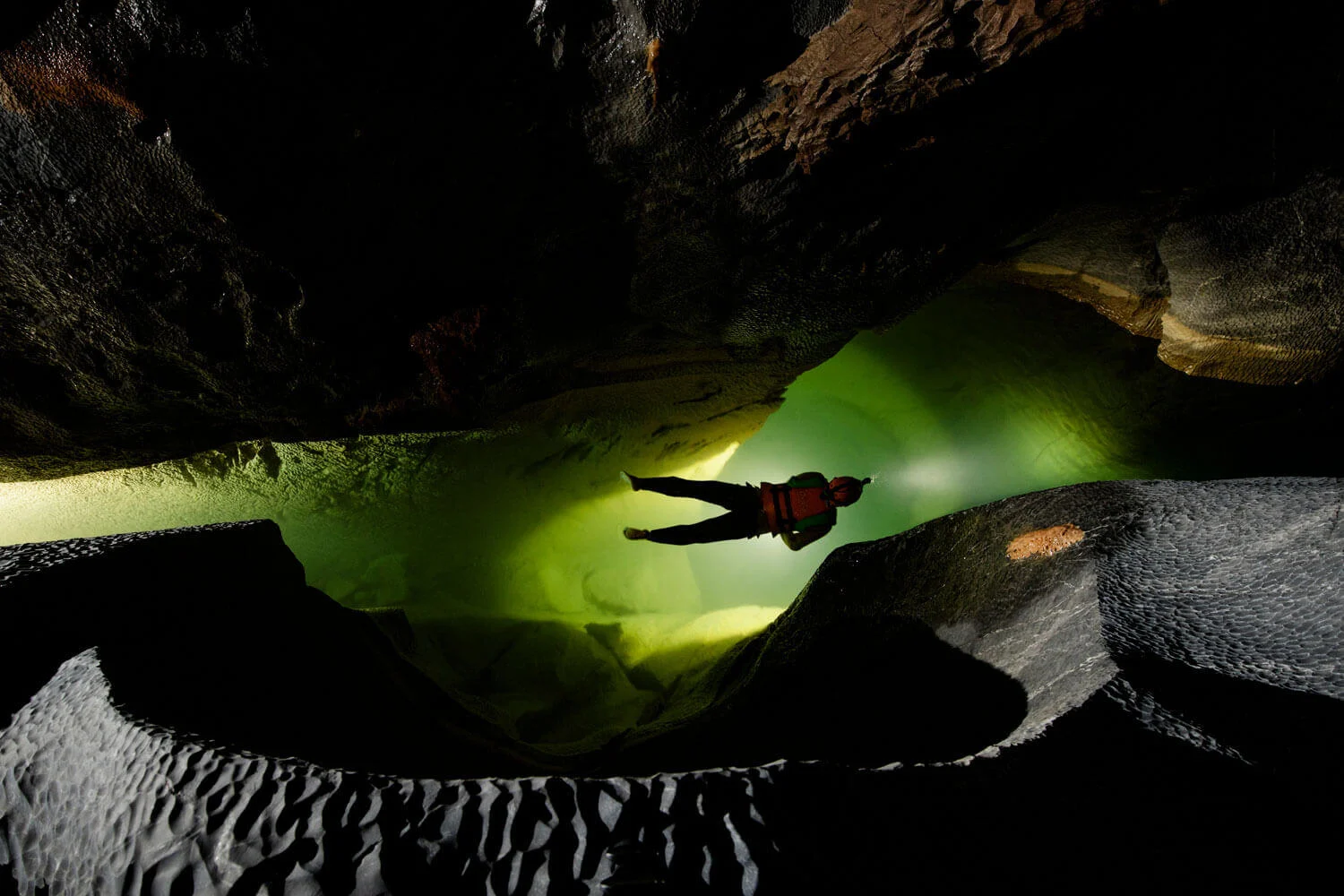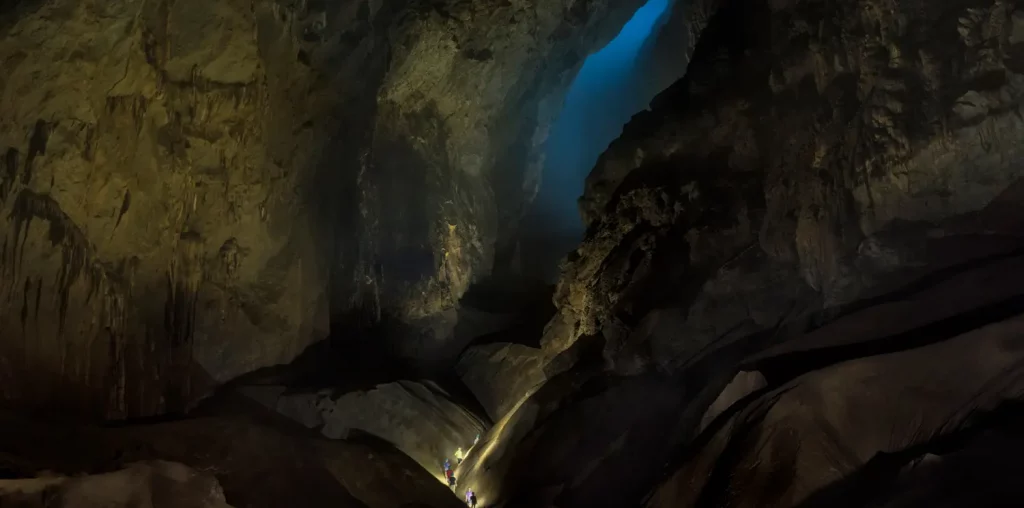The discovery of Son Dung in Vietnam occurred in 1994, when an expedition team explored two grottoes, Hang En and Hang Thung, and realised that there must be another cave in between. At the time they had no idea it would be the largest cave in the world. But the discoverer of the cave is Ho Khanh, a local who was born and raised in Son Trach commune (now Phong Nha town), Bo Trach district, Quang Binh province, Vietnam.
Since he was a teenager, Ho-Khan has worked as a lumberjack, spending weeks in the jungle logging and poaching. In 1990, during his next foray into the forest in search of agarwood (a very expensive plant), he got caught in a thunderstorm and was forced to seek shelter, which he found at a small cave entrance under a rock. As he approached, Ho-Khan saw fog bursting out of the cave and also heard the sound of a roaring river.
Son Dung is considered to be the largest cave not only in Vietnam but also in the world. In 2009 the cave was officially surveyed and measured by a British-Vietnamese expedition team led by Howard Limbert. The expedition group declared it to be the largest natural cave with a volume of 38.5 million m3. The results were accepted by a number of the world's leading karst geologists, including Dr Tony Waltham. In 2013, the Guinness World Records organization registered it as the largest natural cave in the world.

The world's largest cave is a window to another world.
Many people confuse Son Doong Cave, the largest cave in the world, with Mammoth Cave, the world's most famous cave system located in National Park (an American national park in west-central Kentucky), and believe that Son Doong is also the largest underground passage system. However, this article will clear up this misunderstanding and also give you a better understanding of Son Doong Cave and its exploration.
Traditionally, those who find a cave give it a name. So Ho Khánh and a team of experts discussed and decided to name the cave Son Doong (a combination of two words: Son means mountain, Doong is the name of the valley where the ethnic minority Bru Van Kieu lives and the Thuong River, or also means a cave in a limestone mountain through which an underground river flows).
The total length of the dungeon is almost 9 km and the volume is up to 38.5 million cubic metres. With that volume, this grotto is 5 times larger than Deer Cave in Malaysia, which was considered the largest natural cave (before the discovery of Hang Son Doong) with a volume of 9.5 million cubic metres.
However, what makes Son Doong special, recognised and known the world over, is its unique hidden underground world. There are many intricate and gigantic stalactites (over 80 metres high), primitive rain forests growing inside the cave, its own ecosystem, weather and even a mysterious underground river that no one has yet fully explored. Many visitors admit that Hang Son Doong Cave looks like another world, and Ginger Zee of ABC News' Good Morning America exclaimed upon seeing Son Doong, she said the views reminded her of landscapes from the movie Avatar.
This amazing cave is also home to an impressive ecosystem located in the largest passageway. This huge and intricate cave system was created by an underground river and is filled with formations of water that seeped down from the rainforest above. The following attractions can be seen in this cave:
Here is one of the largest sections of Son Dung; from the beginning of this passage you can see the light from the valley, 1.5 km away. Cave experts estimate that a 40-storey skyscraper could easily fit in this passage, and it is large enough for a Boeing 747 to fly through. It is also home to the world's tallest stalagmite, about 80 metres high.


An underground lake and river inside Son Dung
Inside the cave, there is an underground river that is filled with water coming from En Cave and Khe Ry Cave (the longest cave with an underground river, with water coming from the Vietnam-Laos border area). From the entrance to Son Dung, you'll have to cross the river, which can be up to one metre deep, twice to reach the Hope and Vision Passage. There are emergency bridges in case the water level rises. Small waterfalls along the way create a loud rumble. Sometimes the cave fills with mist.


In April 2009, after almost 10 days of exploration and surveying, the expedition team reached a gigantic calcite rock that blocked all paths, the group decided to return due to a lack of specialized equipment to traverse this gigantic wall. Immediately after leaving Hang Son Dung Cave, based on measured parameters, the expedition team declared Son Dung the largest natural cave in the world. At the time, no one knew what lay behind this huge stalagmite, so it was called the Great Wall of Vietnam to describe this spectacular beauty.
Beneath the Great Wall of Vietnam is a lake 600 metres long. When the expedition first approached the site, the water level in the lake had dropped drastically, creating a bog up to 1.5 metres deep. The members of the expedition group had to work very hard to get over this 600-metre-deep swamp. It reminded them of a film about the Battle of Passchendaele in World War I and the team decided to use the name "Passchendaele" to describe this long and difficult walk. During many other months of the year or during heavy rains, water fills the passage, forming a large, beautiful jade-green lake. During those periods when the lake fills up with water, tourists use rafts or boats to swim across Passchendaele.
Despite the feeling that there are no more mysteries in the modern world, planet Earth continues to amaze humanity, which has recently stopped being interested in discovery and research, focusing only on consumption. In our search for miracles, we often do not notice what fantastic events are taking place right in front of our eyes. And only those who know where to look can see the amazing.


 and then
and then 
